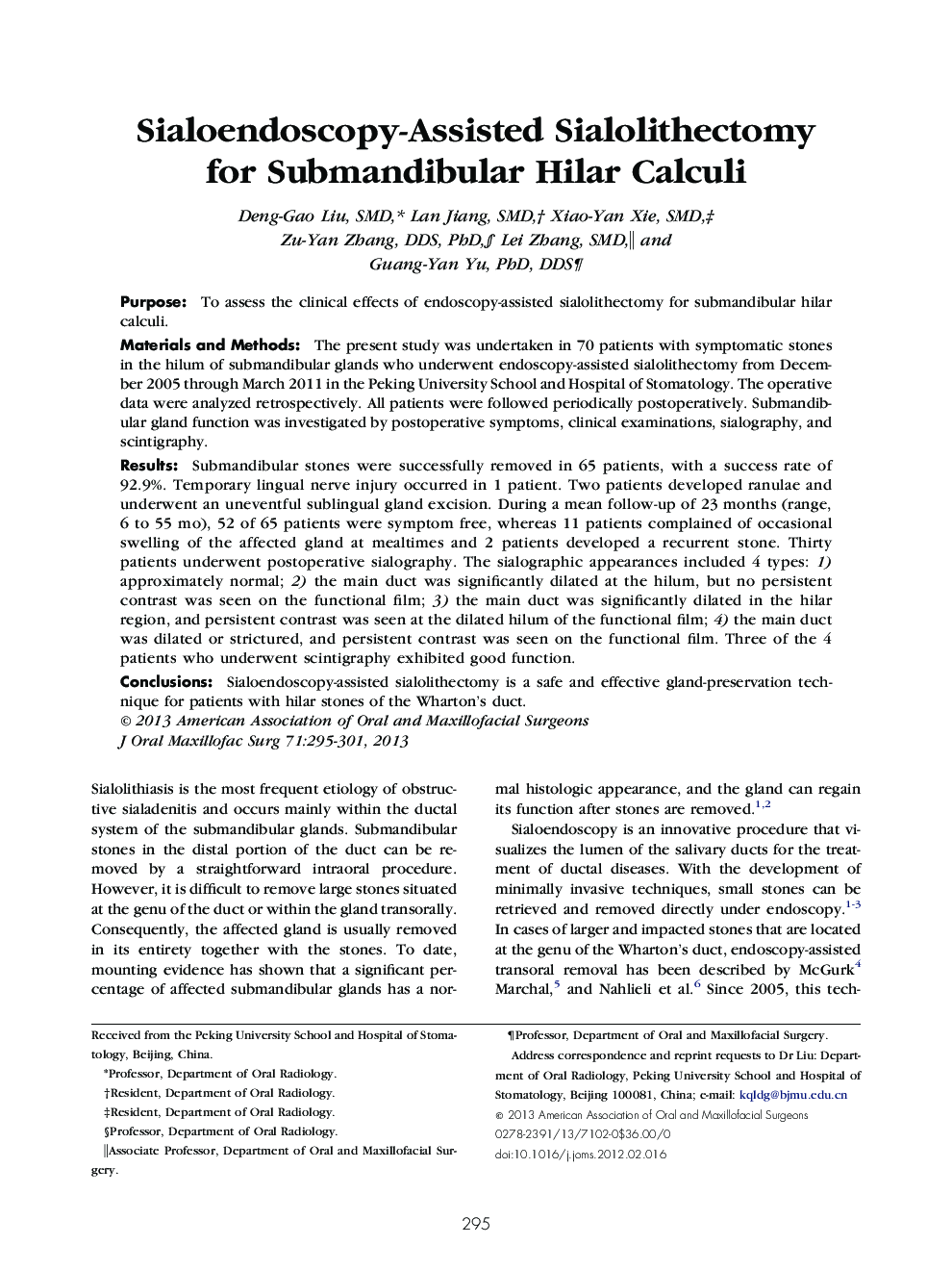| Article ID | Journal | Published Year | Pages | File Type |
|---|---|---|---|---|
| 3152740 | Journal of Oral and Maxillofacial Surgery | 2013 | 7 Pages |
PurposeTo assess the clinical effects of endoscopy-assisted sialolithectomy for submandibular hilar calculi.Materials and MethodsThe present study was undertaken in 70 patients with symptomatic stones in the hilum of submandibular glands who underwent endoscopy-assisted sialolithectomy from December 2005 through March 2011 in the Peking University School and Hospital of Stomatology. The operative data were analyzed retrospectively. All patients were followed periodically postoperatively. Submandibular gland function was investigated by postoperative symptoms, clinical examinations, sialography, and scintigraphy.ResultsSubmandibular stones were successfully removed in 65 patients, with a success rate of 92.9%. Temporary lingual nerve injury occurred in 1 patient. Two patients developed ranulae and underwent an uneventful sublingual gland excision. During a mean follow-up of 23 months (range, 6 to 55 mo), 52 of 65 patients were symptom free, whereas 11 patients complained of occasional swelling of the affected gland at mealtimes and 2 patients developed a recurrent stone. Thirty patients underwent postoperative sialography. The sialographic appearances included 4 types: 1) approximately normal; 2) the main duct was significantly dilated at the hilum, but no persistent contrast was seen on the functional film; 3) the main duct was significantly dilated in the hilar region, and persistent contrast was seen at the dilated hilum of the functional film; 4) the main duct was dilated or strictured, and persistent contrast was seen on the functional film. Three of the 4 patients who underwent scintigraphy exhibited good function.ConclusionsSialoendoscopy-assisted sialolithectomy is a safe and effective gland-preservation technique for patients with hilar stones of the Wharton's duct.
